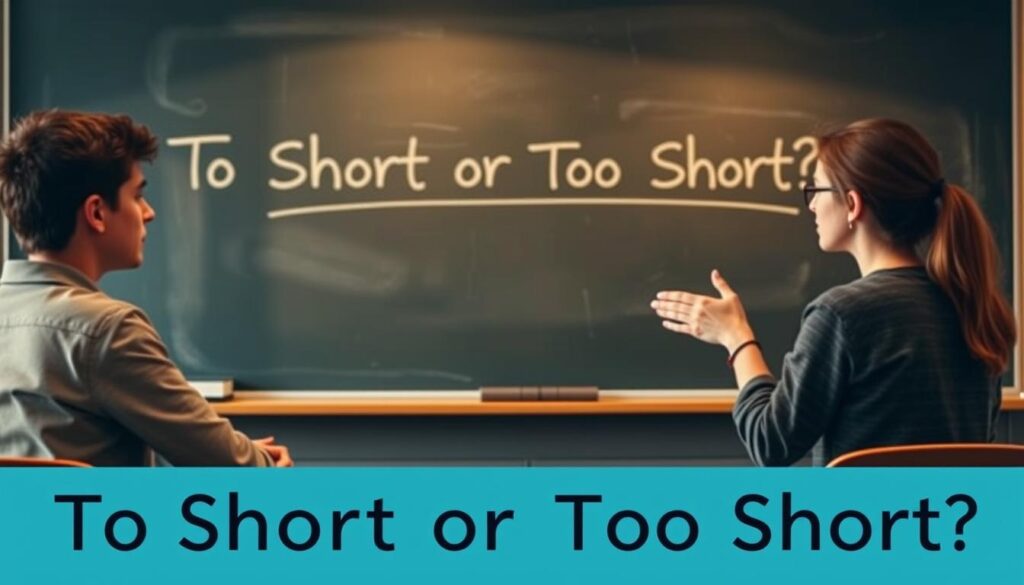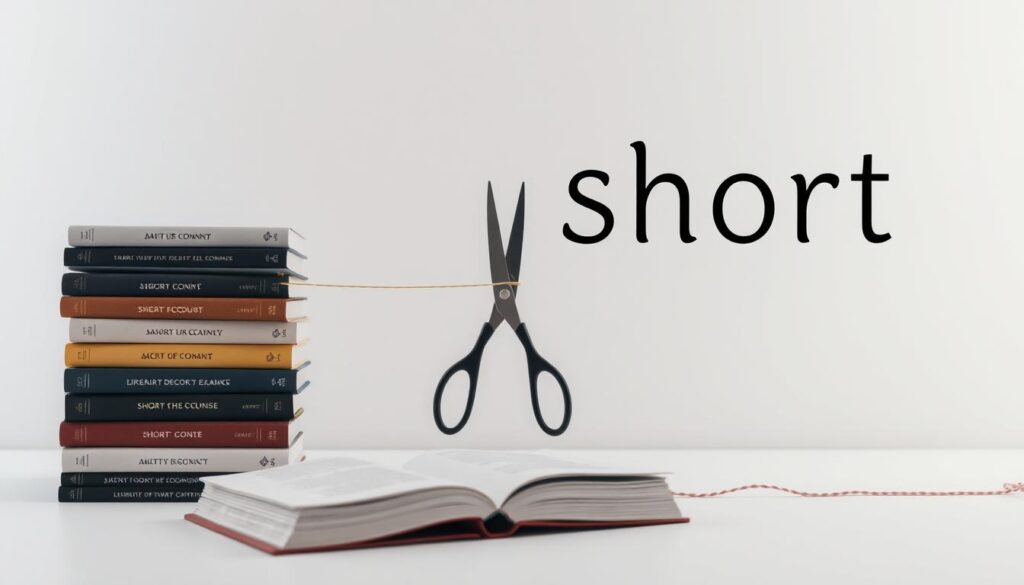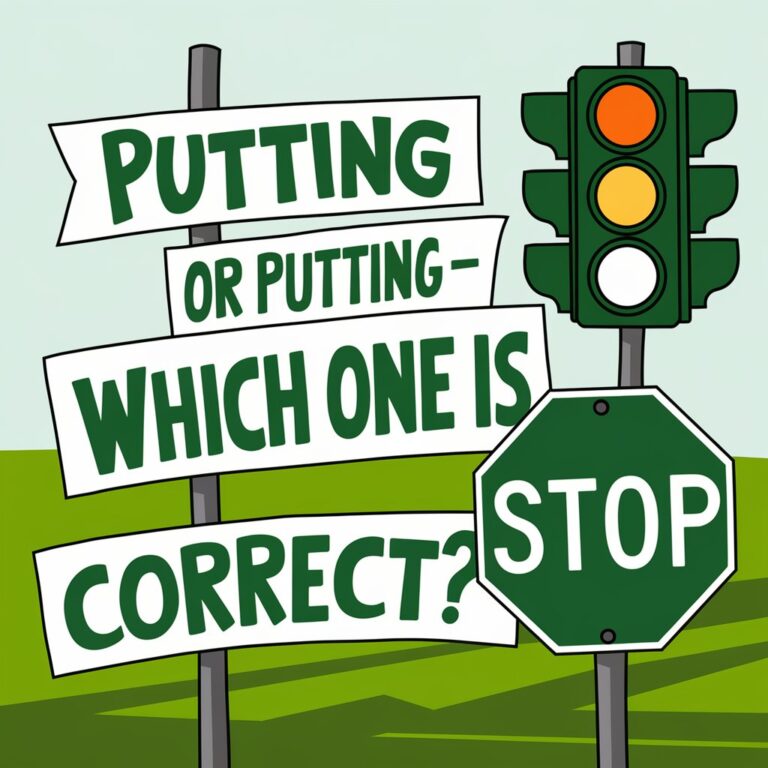To Short or Too Short? Grammar Explained (With Examples)
Even English native speakers get confused between “To Short or Too Short.” It is necessary to understand when to use which in order to convey their meaning. In this article, we will walk you through the grammar rules so that you understand when to use “to short” or “too short.”

Selecting the appropriate phrase, “to short” or “too short,” is crucial for precise writing. Their close spellings and pronunciations can be confusing. We will delve into English grammar’s nuances to illustrate when to choose each phrase.
Introduction to Grammar Basics
Having knowledge of grammar basics is necessary in order to understand the distinction between “to short” and “too short.” Using these phrases properly can really make a big difference in your writing’s effectiveness and clarity. This article shall give examples and explanations to guide you in how to use them properly.
Key Takeaways
- It is necessary to know the difference between “to short” and “too short” to communicate effectively.
- It takes learning the fundamentals of grammar to master the proper use of “to short” or “too short.”.
- Using the right “to short” or “too short” can help to make an enormous difference in written communication.
- Too short or short grammar explained will give the reader a holistic guide to realizing the proper usage of these words.
- Mastering English grammar is important to write in a clear and concise manner.
- The proper application of “to short” or “too short” will be illustrated with examples and explanations.
Understanding the Basic Difference Between “To” and “Too”
The distinction between “to” and “too” is significant in English. Being aware of this assists us in speaking properly. “To” is a preposition used to indicate direction or movement. However, “too” is an adverb used for excess or agreement.
For instance, “I’m going to the store” utilizes “to” for directions. But “I’m going too” signifies you agree or are going as well. Being aware of their uses in sentences is significant.
While considering the difference between to and too, context plays a big role. Too vs to is not only about how it’s spelled. It’s about what meaning you intend to convey. For example, “I’m too tired to go” indicates excess, while “I’m going to the gym” indicates direction.
With these differences, authors can make their writing clear and unambiguous.
It’s also crucial to understand when to use to vs too. Use “to” for direction or movement. Use “too” for excess or agreement. This easy-to-remember rule prevents errors and makes writing effective and accurate.
Examples of to vs too are ubiquitous, ranging from conversations to formal writing. By learning these examples and practicing, writers can enhance their ability and convey more effectively.
When to Use “Too Short” in Sentences
Knowing when to use “too short” is key for clear communication. This phrase means something is not long enough. For instance, saying “The dress is too short for the occasion” means the dress doesn’t meet length standards.
A grammar explanation shows “too short” is an adverbial phrase for excess. When choosing between “short” and “too short,” think about the sentence’s context. “Short” is okay if something just isn’t long enough. But if it’s way too short, “too short” is better. Here are some examples:

- A short story might be brief, but a story that is too short might lack essential details.
- A short dress might be fashionable, but a dress that is too short might be inappropriate for certain occasions.
In summary, “too short” shows something is not enough. By understanding the context and using it right, writers can clearly share their message and avoid confusion.
The Proper Usage of “To Short” vs “Too Short”
It’s important to know the difference between “to short” and “too short” in English. Using these phrases correctly can change a sentence’s meaning a lot. To use them right, you need to know when to pick each one.
“Too short” means something is not long enough. “To short” is not a common phrase in English. But, when talking about short or too short grammar rules, the sentence’s context matters a lot.
- Use “too short” when something is not long enough.
- Avoid “to short” since it’s not a standard English phrase.
- Think about the sentence’s context for proper usage of short and too short.
By keeping these tips in mind and understanding short or too short grammar rules, you can get better at writing in English. This will help you avoid common errors.
Common Mistakes in Using “Short” with “To” and “Too”
Understanding how to short a stock is key in financial markets. Yet, many get it mixed up with being too short, which means something else. Knowing how to talk to short people is also vital for good communication.
In finance, shorting a stock means selling something you don’t own, hoping to buy it back cheaper. Being too short, though, means being physically short or having too little of something.
Common mistakes include:
- Using “to” instead of “too” when talking about being short, like “I am to short” instead of “I am too short”.
- Mixing up the financial term “short” with being physically short, causing confusion.
- Not knowing how to short a stock, which can lead to losing money.
Knowing the right way to use “short” with “to” and “too” helps in clear communication. It’s important whether you’re talking about stocks or everyday conversations. Using the correct words is key to being understood.
| Mistake | Correct Usage |
| Using “to” instead of “too” | “I am too short” instead of “I am to short” |
| Confusing financial and physical meanings | “How to short a stock” vs “I am too short” |
Grammar Rules Governing “Too” as an Adverb
The word “too” is often mixed up with “to”. But it has its own role in English grammar. Knowing the difference between to and too is key for clear communication. Think about the context and what you mean when choosing when to use to vs too.
“Too” means something is too much or you agree. For instance, “I’m too tired to work” or “It’s too cold outside, I agree”. It’s important to know when to use too vs to in sentences.
- Use “too” to show something is too much: “This cake is too sweet”.
- Use “to” for where you’re going or why: “I’m heading to the store”.
- Look at the situation: “I’m too busy to go to the store” (too much) vs “I’m going to the store” (direction).
Learning the difference between to and too and their grammar rules will boost your writing and talking skills. Always use “too” for too much or agreement. Use “to” for direction or purpose. This way, you’ll speak and write more clearly and accurately.
The Different Contexts of “Short”
The word “short” has different meanings in various situations. In finance, how to short stocks is a big topic. It’s about selling things you don’t own. This idea also applies to the crypto world, where how to short crypto is a key strategy for traders.
In the environment, ecosystems have trouble adjusting to short-term changes. This could be sudden weather changes or shifts in temperature. It shows how important it is to understand how our actions affect nature and try to lessen the damage.

It’s crucial to know the different ways “short” can be used. This helps us talk better and avoid getting things mixed up.
| Context | Meaning |
| Finance | Selling securities that the seller does not own |
| Environment | Ecosystems struggling to adapt to sudden changes |
| Cryptocurrency | Selling digital assets that the seller does not own |
Mastering “Too Short” in Everyday Writing
Understanding “too short” is key for clear communication. In work settings, it shows you pay close attention to details. For example, in a grammar explanation, showing examples of short vs. too short is important.
In everyday talk, like on social media or texts, “too short” helps clear up confusion. Here are some examples:
- Describing a sentence that’s unclear as “too short”
- Calling a brief sentence “short”
In school writing, following rules is crucial. A table showing how to use “too short” in different situations can be useful:

| Context | Example Sentence | Correct Usage |
| Professional | The report was too short to include all the necessary details. | Correct |
| Casual | The movie was short and sweet. | Correct |
| Academic | The essay was too short to adequately address the research question. | Correct |
Learning to use “too short” right in your writing boosts your communication. It helps you get your point across clearly.
Important Exceptions and Special Cases
When you talk about “to short” and “too short”, it’s key to know the special cases. For example, life’s short quotes remind us to enjoy every moment. Also, metric tons to short tons conversion is vital in industries needing exact measurements.
In finance, how to short a stock on Robinhood is a big question for investors. It’s important to know how to use “to short” and “too short” right. This helps avoid mistakes, like confusing short selling and short covering in stock market deals.
Here are some important tips:
- Don’t say “too short” when talking about not having something, as it can cause confusion.
- Use “to short” when talking about direction or movement, like “to short a stock.”
- Think about the context when using “too short” or “to short”. It changes the meaning of your sentence.
Knowing these special cases helps you use “to short” and “too short” right in your writing. Always think about the context and what you mean to say. This way, you avoid confusion and communicate well.

Tips for Proofreading “To” and “Too” Usage
When proofreading, it’s important to know how to use “to” and “too”. The difference between them makes your writing clear. Using “to” when you mean “too” can change the sentence’s meaning. So, it’s crucial to use them correctly.
Start by looking for common mistakes like “to” instead of “too”. This mistake can be tricky to spot but is key for clear writing. Try reading your text out loud or have someone else check it. This helps you catch and fix any “to” or “too” errors.
Common Red Flags to Watch Out For
- Using “to” instead of “too” in sentences where you mean “also” or “very”
- Using “too” instead of “to” in sentences where you mean “in the direction of” or “toward”
- Forgetting to use “too” when you mean “excessively” or “extremely”
Knowing these common mistakes and using self-checking can boost your proofreading. Always take time to review and correct your work. This ensures your writing is clear, concise, and effective.
Writing Practice Exercises
Learning to use “to short” and “too short” takes practice. Try writing your own sentences with these phrases. For instance, you could talk about how ecosystems have trouble adjusting to short-term changes and its impact on the environment.
You can also craft a funny sentence using the how to talk to short people meme. See how it fits into a real conversation.
Another practice method is to learn how to short crypto. This will help you grasp the financial markets better. Here are some tips to begin:
- Begin with simple sentences using “to short” and “too short”
- Use the phrases in various settings, like finance or daily chats
- Study examples of right and wrong usage to enhance your grasp
Practice is key. The more you write and use “to short” and “too short” right, the more confident you’ll get in your writing and talking skills.
Real-World Examples and Applications
Knowing “to short” and “too short” is important in most fields such as business, social media, and literature. In business, having the correct grammar indicates that you are professional. For instance, an organization may state that a product is “too short” to indicate its shortcomings. Conversely, a competitor may state “to short” to indicate their product’s advantages.
On social media, the way we use “to short” and “too short” is very important. A person may say “this video is too short” if they are not satisfied with it. Another individual may say “I’m going to short this stock” which means they are going to sell it. These instances indicate why it is necessary to use the correct grammar so that there is no misunderstanding.
In literature, writers apply “to short” and “too short” to create vivid descriptions. They may refer to a character as “too short” to indicate their lack of confidence. Or they may say “to short” to indicate a character’s expertise in difficult situations. The above examples demonstrate how the proper use of “to short” and “too short” can make communication clearer and more effective.
Considering these examples, we can see that “to short” and “too short” are more than just rules of grammar. They’re essential for effective communication in business, social media, and literature. Correct grammar enables us to communicate our message effectively, prevent confusion, and connect with our audience better.
Quick Reference Guide for “To Short” or “Too Short”
It is important in grammar to understand the difference between “to short” and “too short.” You may be asking yourself, “Is it to short or too short?” The answer depends on the circumstance. Use “too short” when something comes up short or fails to live up to standards.
Here are some key points to remember:
- Use “too short” to describe something that is insufficient or inadequate.
- Avoid using “to short” as it is grammatically incorrect.
- Consider the context of the sentence to determine the correct usage.
As an example, “The dress is too short for the occasion” is correct. But “The dress is to short for the occasion” is not correct. By following these tips, your writing will be clear and free of errors in “to short” or “too short” grammar.
Conclusion
Knowledge of the distinction between “to short” and “too short” is essential to good writing. It matters for emails, essays, and even social media writing. It has the power to alter the way your message comes across.
We’ve examined the guidelines for “to” and “too” with “short.” We’ve had examples and errors in order for you to recognize when to use which. “To short” is a direction, whereas “too short” is too much.
Knowing these rules will make your writing more understandable and demonstrate that you’re proficient in English. Practice the exercises and utilize the brief guide to enhance. That way, you’ll address “to short” and “too short” effortlessly in your everyday writing.
If you want to explore whole site : Click Here
FAQS : To Short or Too Short? Grammar Explained (With Examples)
how to short a stock?
Shorting a stock, or short selling, involves borrowing shares of a stock and selling them at the current market price, with the goal of buying them back at a lower price to make a profit. Here’s how it works:
Borrow shares from your broker.
Sell the borrowed shares at the current price.
Wait for the price to drop.
Buy back the shares at the lower price (covering the short).
Return the shares to the broker.
If the stock price drops, you make a profit; if it rises, you incur a loss. Shorting is risky because the potential loss is unlimited if the stock price keeps rising.
how to write a short story?
Here’s a quick guide to writing a short story:
Start with an Idea: Choose a simple concept or theme.
Create Characters: Focus on a main character with a goal or conflict.
Set the Scene: Decide on the location and time.
Develop the Plot: Introduce a conflict, build tension, and provide a resolution.
Write the Draft: Focus on getting your ideas down without worrying about perfection.
Edit and Revise: Improve clarity, pacing, and grammar.
how to talk to short people?
When talking to shorter people, just treat them with the same respect and kindness as anyone else. Avoid making jokes about their height unless they bring it up. Focus on the conversation and make sure your body language isn’t intimidating. Respect their comfort level and show empathy, just like you would with anyone else.
how to talk to short people meme?
A “How to talk to short people” meme is usually a playful and lighthearted way to poke fun at the idea of interacting with shorter individuals, often with exaggerated or humorous suggestions. Here’s a fun and respectful example:
Meme text: “How to talk to short people:”
Step 1: Don’t crouch down to their level (they’re already there).
Step 2: Speak clearly—don’t assume they can’t hear you just because they’re closer to the ground.
Step 3: Remember, they might be short but their humor and personality are tall!
Image: A person talking to a short friend with a big smile, both laughing.
Keep in mind, memes are meant to be fun and should always be respectful, as humor should never make anyone feel less than.
What is the difference between “to short” and “too short”?
“To short” is a verb, meaning to sell something hoping its price will drop. “Too short” is an adjective, describing something that’s too brief or lacks length.
When should I use “to short” in a sentence?
The phrase “to short” is typically used in a financial or investment context, specifically referring to the act of short selling a stock or other asset. In this case, “to short” is a verb phrase meaning to borrow and sell an asset in anticipation that its value will decrease.
Example:
“She decided to short the stock, betting that its price would drop.”
Here, “to short” means to engage in short selling the stock.
Can “to short” and “too short” be used interchangeably in all contexts?
No, “to short” and “too short” have different uses. “To short” is for finance, while “too short” describes length in many situations. Always match the term to the context and meaning.















